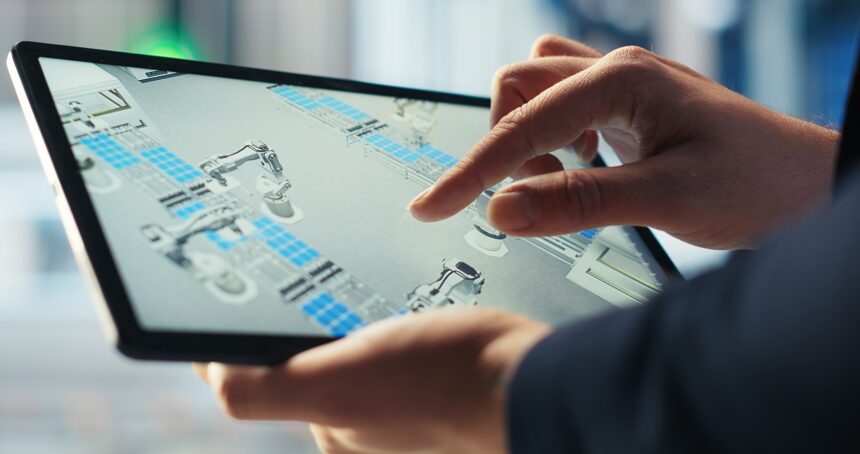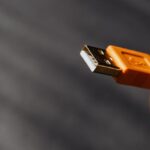In aviation, precision isn’t optional it’s essential. Every small component contributes to the larger mission of safety, stability, and efficiency. Among these components, the Autopilot 16238 Digital Cover Assembly plays a pivotal role.
This innovative digital unit has become a game-changer for modern autopilot systems. It’s not just another mechanical cover — it’s a high-precision digital control assembly designed to protect, regulate, and enhance aircraft performance.
Whether you’re an aviation engineer, technician, or enthusiast, understanding this component’s technology can reveal how small innovations create massive impacts in flight control systems.
What Is the Autopilot 16238 Digital Cover Assembly?
The Autopilot 16238 Digital Cover Assembly is a specialized electronic-mechanical unit designed for integration within an aircraft’s autopilot control system. Its function is to house, protect, and digitally manage sensitive control modules that handle flight automation processes.
Essentially, it acts as the “brain cover” safeguarding vital sensors, processors, and circuits that keep the autopilot system functioning seamlessly.
This assembly bridges the gap between mechanical durability and digital intelligence — ensuring that the autopilot unit maintains accuracy even under extreme flight conditions.
Why the 16238 Model Stands Out
The 16238 model isn’t just a replacement part; it’s a complete upgrade in design and digital integration. Compared to earlier analog versions, this unit includes improved signal processing, better data insulation, and enhanced resistance against environmental stress.
Key highlights of the 16238 model include:
- Advanced digital circuitry for precision control.
- Reinforced protective housing for high-altitude durability.
- Optimized temperature and vibration resistance.
- Easy calibration and system compatibility with multiple aircraft models.
Engineers often refer to it as a “smart shield” — protecting delicate control modules while improving performance consistency.
The Role of the Digital Cover Assembly in Flight
To understand its importance, let’s look at how autopilot systems operate. An aircraft’s autopilot manages pitch, roll, altitude, and heading — all through electronic signals controlled by onboard sensors and servos.
The Autopilot 16238 Digital Cover Assembly houses the digital boards and processors that interpret these signals. It ensures that data remains stable, uncorrupted, and accurately transmitted between the cockpit interface and control actuators.
Without this precise digital cover, even small disturbances like vibration or electromagnetic interference could disrupt performance something no pilot can afford at 30,000 feet.
Engineering Precision: Inside the Design
What makes this component extraordinary is its combination of mechanical integrity and electronic intelligence.
The assembly typically consists of:
- Digital circuit board housing: Encapsulates microcontrollers and flight processors.
- Insulated connectors: Maintain stable data flow even under stress.
- Reinforced outer shell: Protects against heat, moisture, and altitude pressure.
- Shock-absorbing layers: Reduce vibration transmission from aircraft movement.
Each part is tested for precision tolerance and long-term reliability ensuring it withstands continuous operation under high electrical load.
Installation and Calibration Process
Installation of the Autopilot 16238 Digital Cover Assembly requires accuracy and adherence to aviation standards.
Typical steps include:
- System Power Down: Ensure all aircraft electronics are safely powered off.
- Component Mounting: Securely attach the digital cover assembly to the designated slot.
- Connection Alignment: Link cables and connectors following the calibration schematic.
- Software Synchronization: Calibrate digital responses with flight control software.
- Testing: Run a diagnostic to verify stability, voltage consistency, and signal accuracy.
Certified technicians usually complete installation during scheduled maintenance or autopilot system upgrades.
The Digital Advantage
Unlike older analog covers, the 16238 Digital Assembly uses embedded processing chips to maintain signal accuracy and self-adjust under pressure variations.
Its smart sensors continuously monitor:
- Temperature fluctuations
- Pressure consistency
- Vibration levels
- Power flow stability
If anomalies occur, the system auto-corrects or sends alerts to the main flight control module. This makes it an intelligent and proactive component rather than a passive one.
Safety and Reliability Standards
In aviation, safety testing is non-negotiable. The Autopilot 16238 Digital Cover Assembly is built under rigorous international standards — including FAA and EASA compliance benchmarks.
Quality Assurance Involves:
- Thermal Stress Tests: Verifying performance in extreme heat and cold.
- Vibration Analysis: Ensuring no data disruption under turbulence.
- Electrical Insulation Checks: Preventing short circuits and interference.
- Durability Validation: Confirming mechanical endurance over thousands of flight hours.
These measures ensure the assembly remains reliable across years of flight service.
Benefits of the Autopilot 16238 Digital Cover Assembly
Aviation experts and technicians value this assembly for its multi-dimensional benefits:
- Enhanced Flight Stability: Improved data accuracy enhances real-time control.
- Longer Component Lifespan: Reduced wear from environmental stress.
- Energy Efficiency: Optimized power use lowers overall load on the autopilot unit.
- Reduced Maintenance Needs: Self-regulating digital diagnostics identify issues early.
- Seamless Integration: Compatible with a wide range of autopilot systems.
When installed correctly, this single unit can significantly boost overall autopilot efficiency and flight smoothness.
Real-World Applications
The Autopilot 16238 Digital Cover Assembly is used across multiple aircraft types — from small private planes to commercial jets.
Common uses include:
- Flight stabilization systems.
- Altitude hold and navigation modules.
- Engine monitoring interfaces.
- Pilot control assist mechanisms.
Its flexibility makes it a preferred choice for both OEMs (Original Equipment Manufacturers) and retrofit upgrades in older aircraft models.
Maintenance and Troubleshooting
Regular inspection ensures long-term reliability. Most maintenance schedules recommend checking the assembly every 500 flight hours.
Common maintenance practices:
- Clean connector points using non-corrosive solutions.
- Inspect for cracks or pressure damage on the outer casing.
- Check for voltage irregularities or signal lag.
- Replace worn elastomer seals to maintain pressure integrity.
If performance fluctuations occur, the onboard diagnostic tool can trace the issue to a specific section of the assembly — simplifying troubleshooting.
Evolution of Digital Cover Assemblies
The 16238 model represents the next step in the evolution of flight control components.
Earlier designs were fully mechanical, later semi-electronic, and now fully digital. The transition to digital has made autopilot systems:
- Smarter
- Faster
- More adaptive
Future designs are expected to include IoT-based connectivity, allowing real-time health monitoring and cloud-based analytics for predictive maintenance.
This transformation shows how technology is reshaping aviation — one component at a time.
The Human Side of Technology
While it’s easy to focus on hardware and data, the emotional impact of innovation in aviation is powerful.
Every time a flight takes off and lands safely, hundreds of intricate parts — like the Autopilot 16238 Digital Cover Assembly — silently ensure that lives are protected.
Behind this innovation are engineers, designers, and technicians who dedicate their expertise to creating reliability where failure isn’t an option.
That’s the human story behind every flight — precision guided by purpose.
Choosing the Right Supplier
Authenticity matters when purchasing such specialized components. Always source from certified aerospace suppliers or authorized manufacturers.
Before buying, verify:
- Part number authenticity.
- FAA/EASA certification.
- Warranty and calibration support.
- Compatibility with your specific autopilot system.
Counterfeit or uncertified units may lead to serious flight malfunctions an unacceptable risk in aviation.
Cost and Value
Though the cost of the Autopilot 16238 Digital Cover Assembly varies, it typically ranges from $3,000 to $5,000, depending on the aircraft type and supplier.
While that may seem high, its value is unmatched in terms of reliability, safety, and lifespan. Over the years of service, it reduces maintenance costs, prevents flight delays, and ensures peace of mind.
Investing in high-quality assemblies is investing in flight safety itself.
Future of Autopilot Technology
The evolution of autopilot systems is moving toward full digital integration with AI-powered modules. Devices like the 16238 assembly will play a central role in bridging manual control with automated intelligence.
Expect future generations to feature:
- Smart self-healing circuits.
- AI-based turbulence response systems.
- Enhanced data encryption for cybersecurity.
- Predictive diagnostics for zero downtime.
The Autopilot 16238 Digital Cover Assembly isn’t just a part of today’s technology — it’s a foundation for tomorrow’s aviation intelligence.
Conclusion: Precision That Protects
In aviation, every detail counts and the Autopilot 16238 Digital Cover Assembly proves that even the smallest part can make the biggest difference.
It protects, stabilizes, and empowers flight automation with unmatched precision. For engineers, it’s a marvel of design; for pilots, a guarantee of safety; and for passengers, silent assurance that technology has their back.
In the end, it’s not just about metal and circuits, it’s about trust, innovation, and the future of safe flight.
Frequently Asked Questions
What is the function of the Autopilot 16238 Digital Cover Assembly?
It houses and protects the digital control components of an aircraft’s autopilot system, ensuring stable and accurate signal processing.
How is the 16238 model different from previous versions?
It offers enhanced digital integration, stronger resistance to temperature and vibration, and improved data accuracy.
Is it compatible with all autopilot systems?
It fits a wide range of systems, but always check compatibility with your aircraft model before installation.
How often should the assembly be inspected?
Typically, every 500 flight hours, or during scheduled avionics maintenance.
Why is the digital cover assembly so important?
Because it ensures stable autopilot performance, protecting critical flight data and maintaining safety at all times.qEquipmentwebsites?







